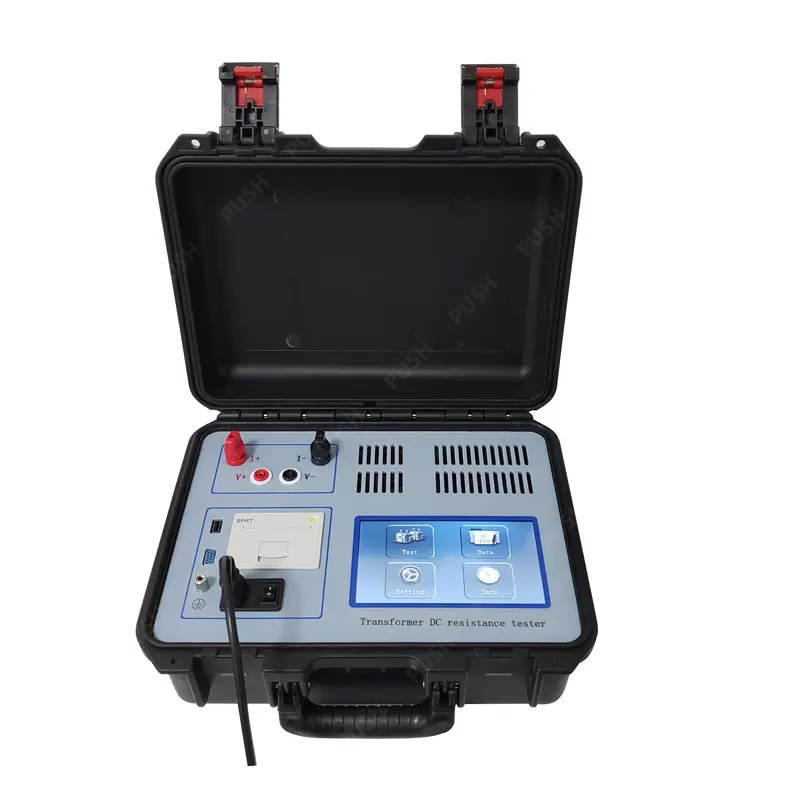Posted on November 3, 2023
How often should earth resistance testing be performed in electrical installations?
The frequency of earth resistance testing in electrical installations depends on various factors, including local regulations, industry standards, the specific type of installation, and the criticality of the electrical system.
Here are some general guidelines:
- Initial Testing: Earth resistance testing is typically performed during the initial commissioning of an electrical installation. This ensures that the grounding system is correctly installed and complies with safety standards and regulations.
- Regular Periodic Testing: After the initial testing, regular periodic testing is recommended to ensure the continued effectiveness of the grounding system. The frequency of periodic testing can vary but is often conducted at intervals of one to three years.
- Major Changes or Maintenance: Whenever there are significant modifications to the electrical system or the grounding infrastructure, it’s advisable to perform earth resistance testing to ensure that the changes have not negatively impacted the grounding system’s performance.
- After Lightning Strikes or Faults: In cases where a lightning strike or electrical fault occurs, it is important to conduct earth resistance testing to verify that the grounding system remains intact and effective. Lightning strikes can damage ground electrodes and conductors.
- Environmental Changes: If the installation site experiences significant changes in soil conditions or the introduction of new conductive materials (e.g., pipelines), retesting may be necessary to account for these changes.
- Highly Critical Installations: In installations where electrical continuity and grounding are crucial for safety or operational reasons, more frequent testing may be necessary, potentially on an annual basis or even more often.
- Regulatory Requirements: Compliance with local regulations and industry standards is essential. Some jurisdictions or standards bodies may specify the frequency of earth resistance testing for certain types of installations.
- Manufacturer Recommendations: In some cases, equipment manufacturers may recommend specific testing frequencies as part of their maintenance guidelines.
It’s important to note that the frequency of earth resistance testing should always be based on a risk assessment, taking into account the potential consequences of inadequate grounding, the criticality of the electrical installation, and any applicable regulatory requirements.
Ultimately, regular earth resistance testing helps ensure the safety and reliability of the electrical system by identifying and addressing grounding issues promptly. It is essential to document all test results and maintenance actions taken to maintain the integrity of the grounding system and demonstrate compliance with relevant standards and regulations.
What are the applications and significance of measuring earth resistance in electrical systems and grounding?
Measuring earth resistance in electrical systems and grounding is crucial for ensuring the safety, reliability, and performance of electrical installations.
Here are the key applications and significance of earth resistance measurements:
Applications:
- Safety: Earth resistance measurements help verify that the grounding system is functioning effectively, reducing the risk of electric shock and ensuring the safety of personnel and equipment.
- Ground Fault Protection: Earth resistance testing is essential for ground fault protection devices (GFPDs) and ground fault circuit interrupters (GFCIs) to operate correctly.
- Lightning Protection: Proper grounding is crucial for diverting lightning strikes and preventing damage to structures and equipment. Earth resistance measurements help ensure that the grounding system can effectively dissipate lightning-induced surges.
- Electromagnetic Compatibility (EMC): Grounding plays a key role in reducing electromagnetic interference (EMI) and radiofrequency interference (RFI). Accurate earth resistance measurements help maintain EMC and minimize signal interference.
- Power Quality: Grounding is essential for maintaining power quality, reducing voltage fluctuations, and improving the overall performance of electrical systems.
- Fault Location: In the event of a fault or ground fault, earth resistance measurements can be used to locate the fault’s position in underground cables or electrical networks.
- Electrostatic Discharge (ESD) Protection: Grounding is vital for preventing electrostatic discharge, particularly in sensitive electronic manufacturing environments. Earth resistance measurements ensure that grounding systems meet ESD protection requirements.
- Substation Grounding: Earth resistance testing is integral in substation design and maintenance, ensuring that substations are properly grounded for the safety and reliability of the power distribution network.
Significance:
- Safety: Ensures the safety of personnel by providing a low-resistance path for fault currents to dissipate, reducing the risk of electric shock and fire hazards.
- Protection Against Lightning: A low-resistance grounding system helps protect structures and equipment from lightning strikes, reducing the potential for damage.
- Continuity of Electrical Supply: Proper grounding minimizes power interruptions caused by equipment failures and allows for the reliable operation of electrical systems.
- Ground Fault Protection: Facilitates the correct operation of ground fault protection devices, ensuring that faulty equipment is quickly disconnected from the power supply.
- Power Quality: Maintains stable and clean power, earth resistance tester reducing voltage fluctuations and preventing electrical noise that can affect sensitive equipment.
- Compliance with Standards: Ensures compliance with local, national, and international standards and regulations related to grounding and safety.
- Preventive Maintenance: Regular earth resistance testing allows for the early detection of deteriorating grounding systems, enabling proactive maintenance to avoid unexpected failures.
- Optimizing Equipment Performance: Proper grounding can extend the lifespan and optimize the performance of electrical and electronic equipment.
In summary, measuring earth resistance is fundamental for maintaining a safe and reliable electrical system, protecting against electrical hazards, and ensuring compliance with industry standards. It plays a critical role in enhancing safety, equipment longevity, and the overall performance of electrical installations.


